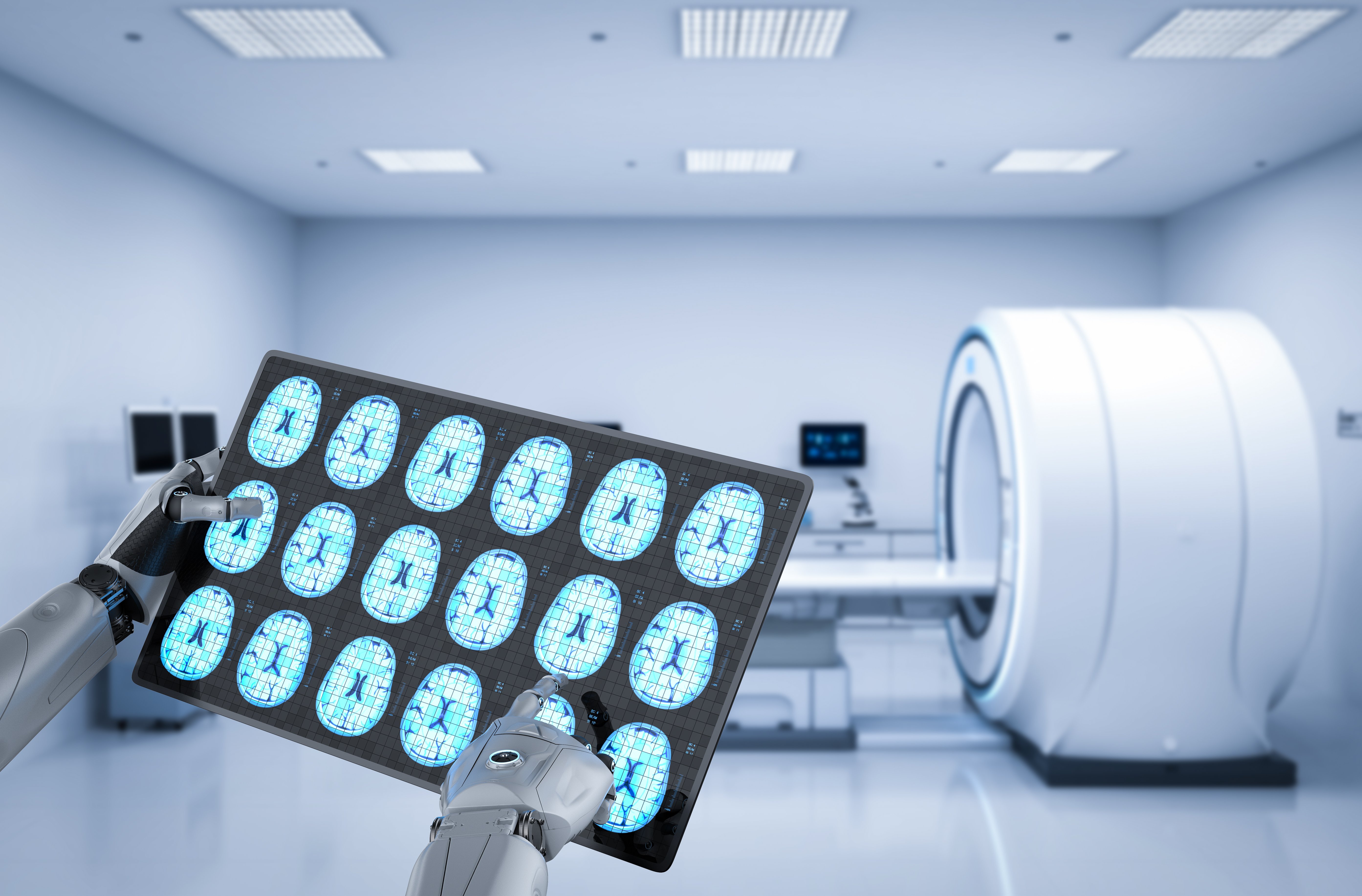
Does it take a global pandemic to change the way providers deliver care? COVID-19 brought an impact to many healthcare institutions including hospitals and outpatient imaging facilities, many of which saw decreases in patient volumes along with changes in the types of procedures being ordered. This led to shifts in hours, staffing models and even business models. These changes required the adoption of new technologies to remain efficient and effective.
Even before the COVID-19 outbreak radiologists were seeing the need for more efficiencies in their productivity. Imaging technologies have changed over time and imaging systems have been developed, which has brought on an increased number of images radiologists need to view. These more complex studies have created a challenge for many non-radiologist providers to view the studies with a clear understanding and the interpretation of radiologists. Combined with the more complex studies and increased image counts, specially trained providers, like radiologists, are becoming fewer and fewer. A 2019 article published on ACR.org stated there could be “A national shortage of specialty physicians, potentially upwards of 31,000, by 2030.”1
Radiology Informatics
There are changes in business and staffing models, procedures ordered, increases in image counts, more complex studies, and don’t forget — the radiologist is still a consultant and needs to be able to consult on the appropriate study to be ordered, studies performed and results of the studies; all tying into the diagnosis and treatment of the patients. This all leads to the question of what can be done to streamline the productivity of the radiologists? Radiology informatics is a key portion of that answer.
Radiology informatics has greatly evolved over the years. As flashcards and film have gone away, many new technologies have evolved that when put together as a whole, can streamline the productivity of the radiologists and referring providers. Therefore, radiology informatics may be composed of many systems so it should be viewed as a solution — one that addresses those complexities, complications and constraints found in medical imaging.
The radiology informatics solution must be able to manage the scheduling of studies. Often it is the radiology information system (RIS) that performs this function. But in today’s busy climate, the scheduling of studies includes so much more. There need to be tools for:
- the ordering provider to confirm they are ordering the appropriate exam based on the need of the patient in the most cost-effective manner;
- the radiologist to provide a defined protocol for the specialty exam that is being ordered; and
- to monitor the efficiencies of the modalities across the organization’s campus or multiple campuses thus providing the best patient experience possible.
And as many radiologists do not live in electronic health records (EHR) like other providers, the RIS can be the conduit to provide the appropriate historical and clinical data to the radiologists at the time of the interpretation.
The efficiencies of the solution can truly be noticed through the worklist that is provided to the radiologists. A worklist can no longer be a long list of exams that need to be read by the radiologists. The worklist for an efficient radiologist delivers the appropriate studies to radiologists based on subspecialty, priority, shift requirement, relative value unit (RVU) expectations and more. Generally speaking, this worklist is where many radiologists will spend their time picking up their work. This dynamic list is the driver for much of the work that will be performed by the radiologists. From this view of the worklist, the radiologist should be able to see at-a-glance features like the next study to be read, studies that are nearing the time protocols, key clinical information on the patients and other items. This might include studies that have been read, RVU workload for the day or communication tools between the radiologists and technologists. This worklist has become the workflow engine for the radiologist, therefore making the radiologist more efficient and streamlining their workflow.
The Viewing Experience
Upon selecting a study from the worklist, the picture archiving and communication system (PACS) now needs to deliver the viewing experience. This viewing experience from the PACS needs to utilize a display protocol that presents the study in an orderly process to accommodate the reading style of the radiologist. The PACS needs to then provide the tools that are necessary and appropriate for the study or image that is being viewed. A general radiology study requires different measuring tools than a computed tomography (CT) or magnetic resonance imaging (MRI) study, and to keep the most streamlined workflow those tools should be readily accessible without multiple clicks or keystrokes. A portion of the viewing experience will likely include post-processing tools. Having those tools or 3rd party applications embedded as part of the experience does not require the radiologist to leave the workstation or application to complete that effort. Embedding these technologies as part of the display protocol can enhance the workflow for the radiologist as well.
Viewing the images is not where the workflow for the radiologist ends; they still need to interpret the study or provide results. As most organizations have moved away from transcription services, this now puts the entire ownership of creating the results on the radiologist. The results need to be streamlined like the viewing experience. This streamlined approach could come through voice recognition software, structured reporting tools, or a combination of both. The result becomes a highly scrutinized portion of the medical record as it is used in the diagnosis and treatment of the patient, and therefore needs to be thorough, and rich with detail and accuracy.
The results become the crucial portion that many ordering and referring providers want to have. This is the communication lifeline that aids in the care of the patient, and is why result distribution tools have become so important. The result distribution may be the classic fax, or put directly into the patient’s electronic health record or physician portal with an electronic messaging system. This result distribution toolset may even offer follow-up tools to the radiologist to help communicate STAT, emergency or critical results. These tools may also include the functionality to confirm the patient received the recommended procedures as part of the interpretation. The solutions used for results, result distribution and follow-up tools become very important in the delivery of patient care.
Artificial Intelligence
There have been many systems mentioned as part of radiology informatics, and one portion that cannot be over-emphasized enough is in the integrations. Each of these systems needs to be able to talk to each other and share specific data elements when necessary. This proves all the more necessary for systems to be compliant with HL7 or DICOM when appropriate. If the line of communication between the technologies is broken, the productivity for the radiologist is going to be deeply impacted.
Artificial intelligence (AI) is probably one of the largest topics in radiology informatics. AI is growing and changing rapidly as it becomes embedded in each of the previously mentioned systems. It is used in ordering, viewing, resulting and many places in between. AI can be used to guide the appropriate exam being ordered to aid in the diagnosis, or used to pre-scan the exam as it hits the inbox and increases the priority level if a positive diagnosis is suspected. It may be used to aid in the creation of the result by pulling in measurement data, a preconstructed narrative based on what the algorithm sees in the image data. The future of AI is hard to predict because it is in such an early stage and there is so much more to learn and do with it. The radiology informatics support team must be keenly aware of the new technologies and those on the horizon so they can help navigate these technologies to the radiologist in streamlining productivity.
This also brings in the radiology informatics support team. Each of the systems mentioned requires knowledge and skill. This support team is a combination of clinical and technology team members that can talk the talk and walk the walk of the clinical and IT space. As these systems and technologies grow and develop, the IT space continues to be in-demand, and yet having an individual that can still speak to and understand the clinical needs of the radiologist is crucial.
Although the surface was only touched as to why the workflow for clinicians and radiologists needs to be streamlined, there is a large role that radiology informatics can play. Although considered by some to be a cumbersome and broad term, it emphasizes the very reason for the need to have a competent team to collaborate and support the solutions. After all, the term itself includes all those systems used in medical imaging departments.

Chris Patrick is CEO of Nuvodia, a technology services organization that creates, manages, secures and supports mission-critical IT environments. In his 20 years of diverse professional experience, he has owned and successfully sold a small business, served as director of sales at AT&T and held several top posts in the information technology sector.
Reference:
- Hudnall, C. (2019, February 1). ACR-Bullentin/Articles. Retrieved June 15, 2021, from American College of Radiology: https://www.acr.org/Practice-Management-Quality-Informatics/ACR-Bulletin/Articles/February-2019/Changing-Tides. Accessed Aug. 3, 2021.


 April 16, 2024
April 16, 2024 








